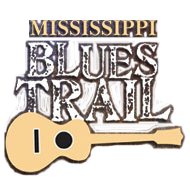The New World
The New World - Clarksdale
This neighborhood, known since the turn of the twentieth century as the New World, was a breeding ground for ragtime, blues, and jazz music in Clarksdale’s early days as a prosperous and adventurous new cotton town, when brothels here attracted both white and black clientele. Jews, Italians, Chinese, Syrians, and Greeks owned various local businesses, as did some African Americans who lived here, including the Messenger family, which opened its first business on this block in the early 1900s.
The New World acquired its name from Nelson Jones, an African American who built a saloon with an upstairs rooming house on the south side of the Yazoo & Mississippi Valley Railroad tracks, across from the site where the passenger depot was later built, according to H. L. Talbert, who arrived in Clarksdale in 1891. In 1948 Talbert recalled: “. . . he had a large sign erected on the front which read, Nelson Jones’ New World, and this part of Clarksdale has been known by that name all these years.” This sector was also once known as Yellow Bottom(s), when early railroad workers stayed in yellow-painted shanties. African Americans moved into the housing when the railroaders moved on. Brick buildings were constructed after a devastating fire swept the area.
W. C. Handy, who lived in Clarksdale from 1903 to 1905, wrote that money flowed in the New World red light district, where his orchestra performed on “big nights, occasions when social and political figures of importance were expected to dine and dance with their favorite creole belles. . . . This led us to arrange and play tunes that had never been written down and seldom sung outside the environment of the oldest profession. Boogie-house music, it was called.” A civic campaign led to curfews beginning in 1914 along with laws to control houses of ill repute, streetwalking, gambling, noise, and liquor. World War I brought economic restrictions as well, although Clarksdale would still be promoted as the Wonder City of the Delta, and the New World continued to be a vibrant, if less freewheeling, district, especially on Saturdays, when plantation workers poured into town. Blues singers performed on the streets, in juke joints, and at the train station. When the popular spots, including the Dipsie Doodle and Messengers, closed at curfew time, festivities shifted en masse back to the plantations. In 1941 scholar John W. Work III compared the Saturday night exodus to”a huge reveling cavalcade moving out to the plantation ‘where they can have their fun.'”
Founded by Edward Messenger, who had a liquor license as early as 1907-08, Messengers was one of the earliest African American-owned local businesses. His grandson, George Messenger, celebrated the 100th anniversary of Messenger’s in the 21st century. Other New World bars, juke joints, and clubs have included Wade’s Barbershop and Lounge, the Casanova, the Blue Den, J.J.’s, Club 2000, and Club Champagne, but the primary blues venue here for several decades was the Red Top Lounge at 377 Yazoo Avenue, owned by Chester Tarzi and later by James Smith when it was also known as the Pig Trail Inn or Smitty’s. Blues singer James Alford also ran Smitty’s at one time. Other notable businesses in the New World have included Dr. Aaron Henry’s 4th Street Drugs, the Roxy and New Roxy theaters, and deejay Early Wright’s remote WROX radio studio.
content © Mississippi Blues Commission
[ BACK TO TOP ]

